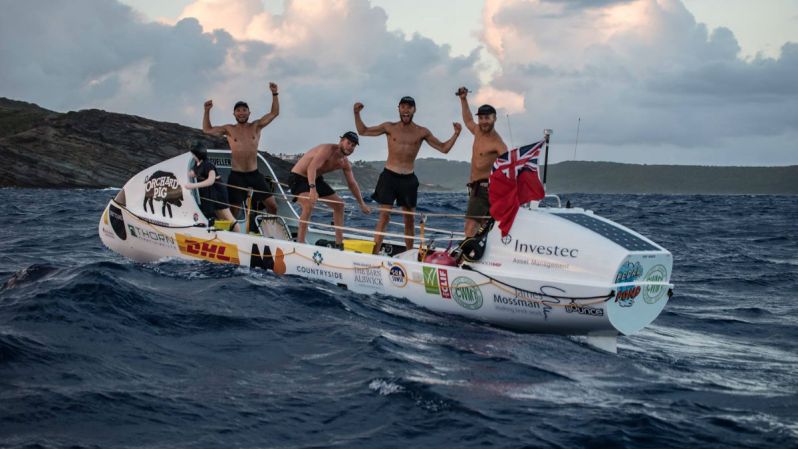Four friends boarded a paddle boat and set off to cross the Atlantic Ocean with one goal in mind: raise awareness of mental health issues among men. After launching from London on January 7, 2018 and battling extreme weather, cramped conditions, and intense sleep deprivation, the Pedal the Pond team made landfall in the Caribbean island of Antigua on February 16.
“We did it for people who have it far worse than us,” says Paddy Johnson, one of the four-man team. “The charity made it all worth it.”
Over the course of the trek, Pedal the Pond raised more than 175,000€ (USD $215,278) for The Charlie Waller Memorial Trust, whose efforts help people recognize the signs of depression in both themselves and others, so they know when and how to seek help.
“We are four young men in the demographic that statistics show is the most affected by suicide,” Johnson tells to The Manual, adding that, in the UK, suicide is the biggest killer of men under 35 years old. “We hope that by talking about mental health in the public sphere, we’ll encourage more people to get talking as well as educating themselves on the issue.”
While the epic trek to cross the Atlantic Ocean by a hobby pedal boat was aided by sponsors like DHL Express, the trip was anything but a luxury seafaring vacation. Aside from being physically exhausting, Johnson says the biggest challenge was mental.
“We were working physically, sleeping in two-hour shifts on and off, but the hardest bit was the cramped living conditions. You’d get a break to sleep in the cabin and open the door when a wave would crash straight into the bed. It took ages to get into the sleep, leading to sleep deprivation and ridiculous hallucinations,” Johnson recalls. “We were also dealing with salt sores on our bums, really bad chafe, and not sorting out with each other. In the day, you battled the heat, and at night, the freezing waves. Nights at the beginning were really tough. We had a massive wind and the waves were about 40 feet. We did get beasted by the conditions.”
On the flip side, the guys were witness to amazing wildlife, had lots of laughs, and received an outpouring of support from family and strangers alike who supported the cause. Plus, Johnson says they coped with the hard times by finding small achievements and treats to look forward to, like a quick rest or chocolate flapjacks.
While Johnson says he hasn’t personally dealt with mental health issues like depression, he says it’s been a growing problem at home in the UK and has seen close friends take their lives. “If you don’t talk about mental illness, it can lead to catastrophic circumstances,” he says.
This was the case for Charlie Waller, whom the charity was founded after. Waller committed suicide at age 28 after suffering from depression. The successful advertising executive had great friends, a loving family, and, to the outside world, a perfect life. Johnson says Waller’s father sat down and told him they created the charity for the sole purpose of educating people to spot the signs and symptoms of depression, opening an avenue where discussion of mental illness is normalized.
“The goal is to make it a casual conversation like breaking your arm. If you break your arm, you talk about it,” Johnson says, adding that it’s best to talk about mental health concerns with people you trust. “We’re not saying set it as your Facebook status. Speak to someone who genuinely knows who you are like a girlfriend, family, or best mate.”
Mental Health America reports that, in the U.S., over 6 million males are affected by depression each year. This number doesn’t account for other mental health problems like anxiety, bipolar disorder, psychosis, and schizophrenia, and eating disorders. It’s also been found that more than four times as many men die by suicide in the U.S. than women; men are less likely than women to seek help, downplaying symptoms and refusing to open a dialogue.
While the team at Pedal the Pond has completed the journey and are back home grabbing a pint with friends, The Manual wants to keep the conversation going.
If you think you or a loved one may be experiencing signs of a mental illness, take a free, quick, confidential screening.




